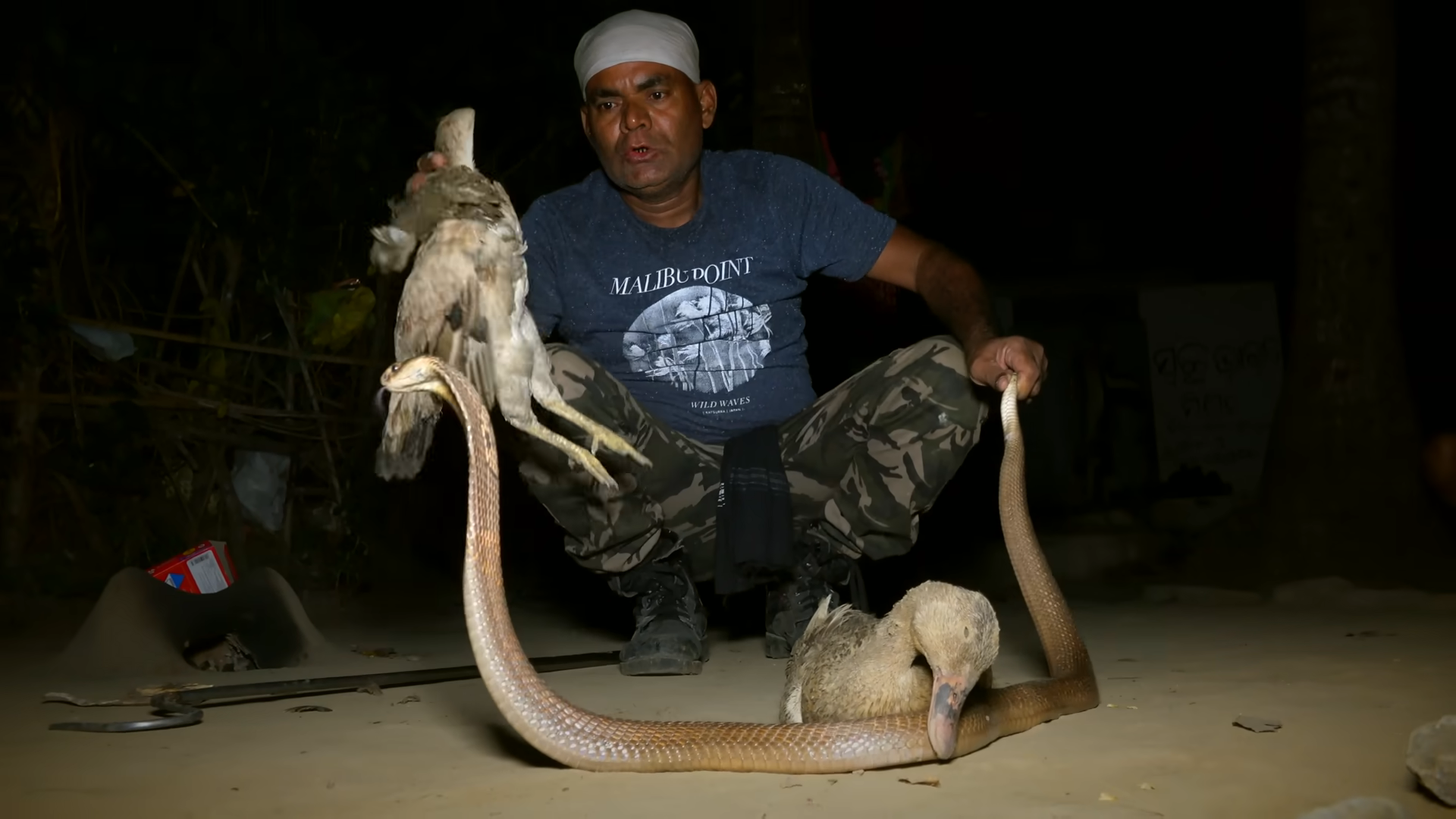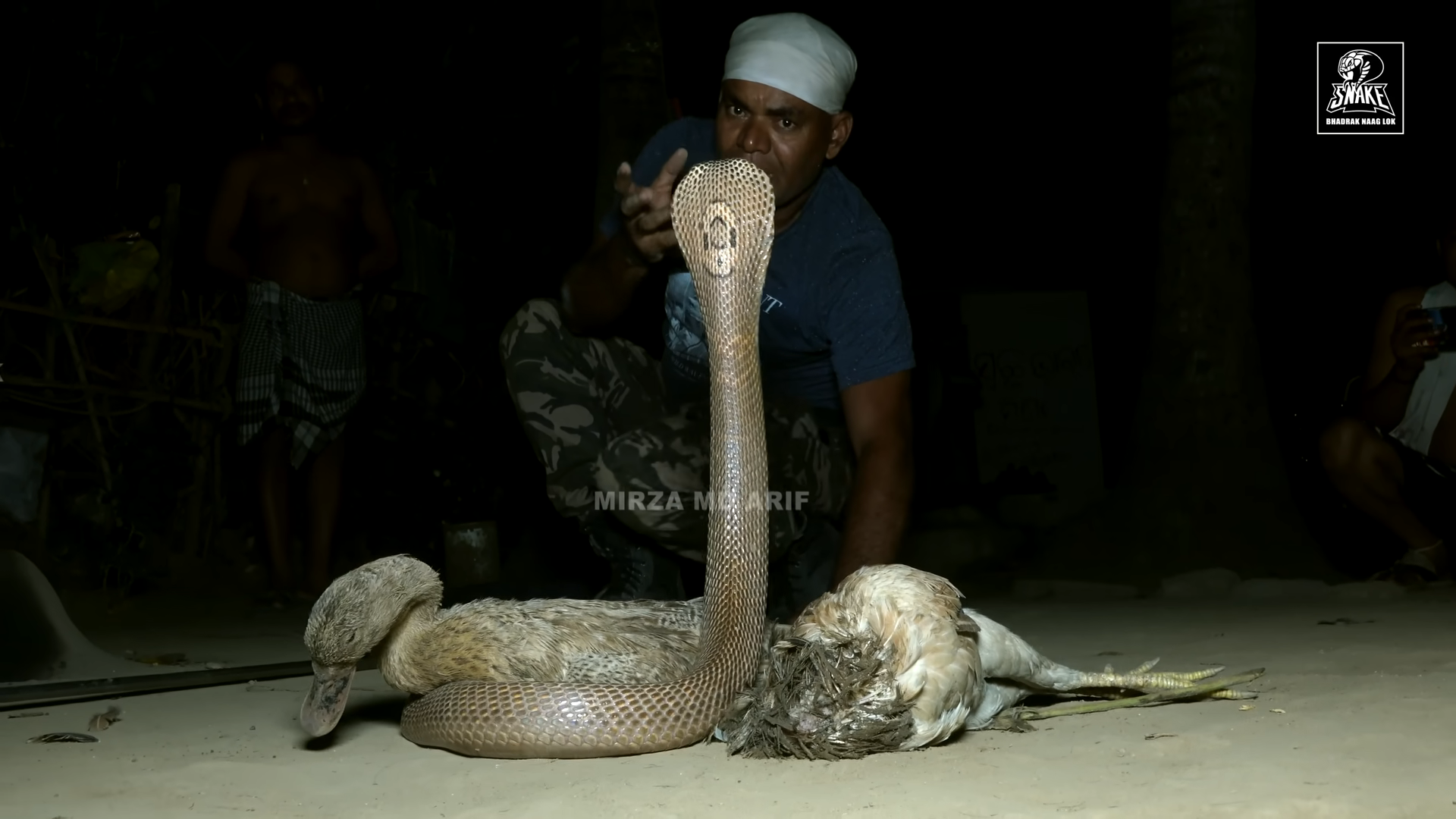A large, venomous monocled cobra kills several ducks and tries to consume them alive before being saved. Native to South Asia and Southeast Asia, the monocled cobra (Naja kaouthia) is a species of highly venomous snake. In addition to Malaysia, Bangladesh, Bhutan, Laos, Myanmar, and Thailand, these poisonous and possibly hazardous snakes can also be found in China, India, Vietnam, Nepal, Cambodia, and Malaysia. The species, which is a member of the Elapidae family, is also known as the Monocellate cobra or Thai cobra.

The O-shaped, or monocellate, hood pattern that is visible on the back of the hood gives the monocled cobra its popular name. It differs from the spectacled cobra, also known as the Indian cobra, in that it lacks the “spectacle” pattern made up of two circular ocelli joined by a curving line.
Monocled cobras have lengthened cervical ribs that extend to form the traditional hood when they sense danger. They are medium-sized, heavy-bodied snakes. When threatened, these cobras will lift their bodies, expand their hoods, hiss loudly, and eventually strike and bite to defend themselves. Normally, they prefer to escape.

One of the fastest acting snake venoms in the world, their highly poisonous venom can result in death within an hour of envenomation. Monocled cobras are significantly more hazardous because, unlike the Indian Cobra (N. naja), they can bite on contact.
Their bite results in regional swelling at the bite site as well as gradual nervous system paralysis, which can cause respiratory paralysis and asphyxia-related mortality. The monocled cobra bite may also cause tissue necrosis that needs to be treated surgically. They are slightly specialized for spitting and feature a fixed set of anterior fangs that can be as long as 6 mm.




